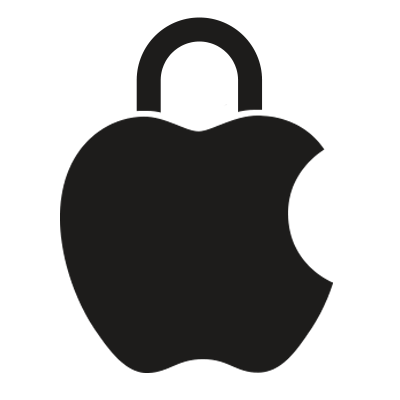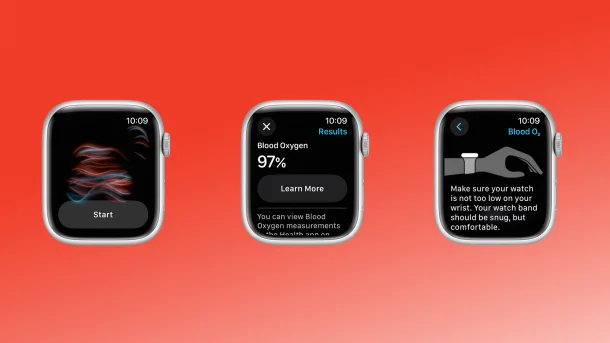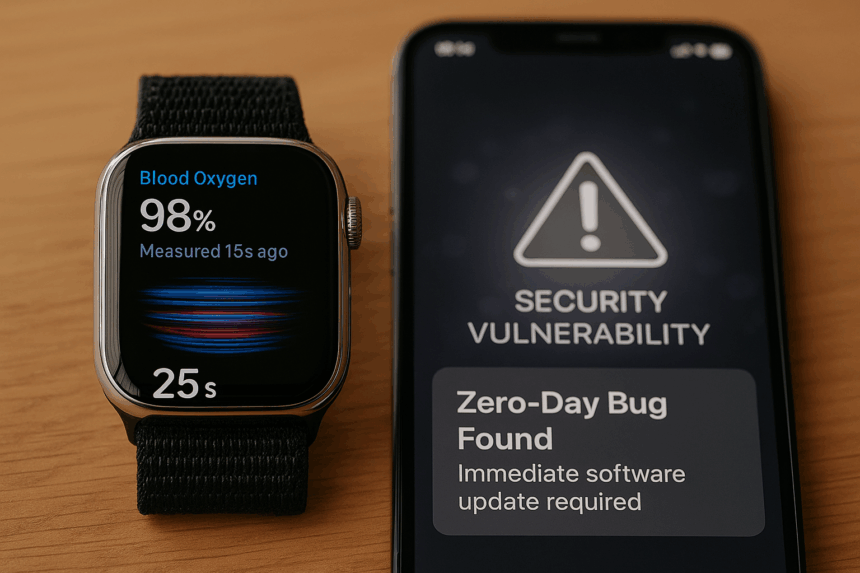Apple is back in the security spotlight. The company just rolled out an emergency patch to stop a zero-day vulnerability that could let hackers break into iPhones, iPads, and Macs. At the same time, Apple’s blood oxygen monitoring feature — recently restored on its Apple Watch models — faces new legal battles that could threaten its future in the U.S. Among these issues, Apple security features play a crucial role in protecting user data and devices.
What’s Happening & Why This Matters
Apple’s Zero-Day Patch
On Wednesday, Apple pushed iOS 18.6.2, iPadOS 18.6.2, and updates across macOS Ventura, Sonoma, and Sequoia. The update closes a flaw known as CVE-2025-43300, which resides in Image IO, the software framework that handles image formats on Apple devices.

Hackers had reportedly used booby-trapped images to exploit the weakness. These images, shared by email or text, could cause memory corruption, allowing attackers to slip malicious code onto a device. Apple didn’t disclose exact details, but experts warn that spyware groups or state-backed hackers can exploit bugs like this. This incident highlights the importance of Apple security features in defending against potential threats.
Apple confirmed the threat was already exploited in “extremely sophisticated attacks against specific targeted individuals.” Users of iPhone XS and later, as well as modern iPads and Macs, are urged to update immediately to benefit from the latest Apple security features.
Blood Oxygen Readings Enter New Legal Dispute
While shoring up device security, Apple faces renewed legal trouble over its Apple Watch blood oxygen feature.
Medical tech firm Masimo has filed a lawsuit against U.S. Customs and Border Protection (CBP), accusing the agency of overstepping its authority. In 2023, the International Trade Commission (ITC) banned Apple Watch sales after ruling that Apple’s sensor technology infringed on Masimo’s pulse oximetry patents.
Apple responded by disabling blood oxygen readings, then reintroducing them in August 2025 through a workaround. Instead of measuring directly on the watch, readings now run through a paired iPhone. Apple claims this redesign complies with regulations after CBP issued a 1 August ruling clearing imports.

Masimo disagrees. In its complaint, the company says CBP acted unlawfully by approving the feature without its input. Masimo is now asking a federal court in Washington, D.C., to block the ruling. “Each passing day that this unlawful ruling remains in effect irreparably deprives Masimo of its right to be free from unfair trade practices,” the company argued. Disputes like this can have long-term implications for Apple’s features if critical functionalities are affected.
Why Users Should Care
For everyday Apple users, these parallel stories hit on two critical points: security and health tech reliability. The zero-day fix shows how fast threats can spread through standard functions like viewing images, reinforcing the necessity for robust Apple security features. Meanwhile, the Masimo lawsuit underscores how patent battles can impact which features stay available on popular devices like the Apple Watch.
If courts side with Masimo, Apple Watch owners may once again lose access to blood oxygen monitoring in the U.S. — a feature marketed as part of its health ecosystem.
TF Summary: What’s Next
Apple’s urgent patch demonstrates the ongoing tug-of-war between device security and sophisticated cyber threats. Users need to update immediately to stay protected from exploits tied to malicious images. At the same time, the legal fight with Masimo casts uncertainty over whether Apple Watch’s blood oxygen monitoring will remain available in the U.S. market.
The outcome hinges on how the courts weigh intellectual property rights with consumer access to health technologies. Until then, Apple is walking a tightrope between innovation, security, and regulation.
— Text-to-Speech (TTS) provided by gspeech


